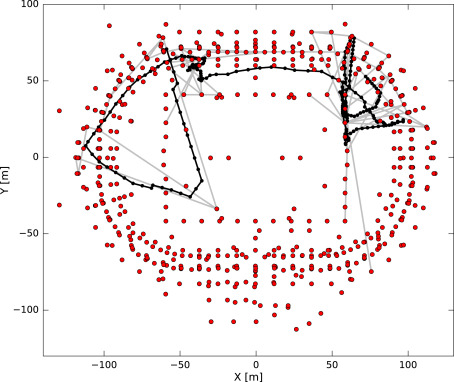This work has been caried out by Philip Rutten and Michael Lees (CSL) in collaboration with Prof. dr. Sander Klous (KPMG, SNE) and Prof. dr. Peter Sloot (IAS, CSL).
There has been a number of reports showing evidence that human movement behaviour follows patterns resembling Lévy walks. These studies focus on the foraging patterns of rural humans and human hunter-gatherers. Here, we investigate motion patterns of visitors of a large dance event in the Johan Cruijff ArenA football stadium in Amsterdam. We find intermittent, persistent motion patterns. Using a path segmentation algorithm, we measure displacements (step lengths), and movement durations. We explore an alternative approach in the analysis of the movement tracks to overcome the limitations set by the bounded, concentric space of the building. Displacement distributions resulting from our alternative model deviate from the exponential and are best fit by a stretched exponential distribution. To further investigate the motion, we look at the mean-square displacement and autocorrelation of the turning angles. Although we find no evidence of Lévy walks, individuals move with directional persistence and superdiffusively up to a scale set by the size of the stadium.
Popular science press release can be found here.


